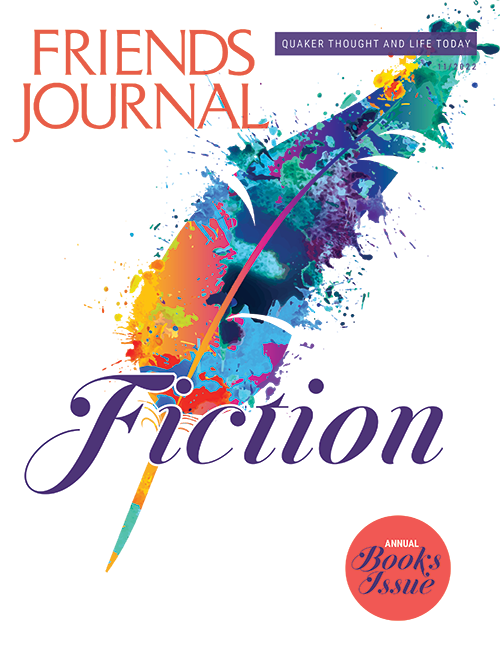Expressing what we cannot say
I am a retired speech-language pathologist, and a musician as well. Once upon a time, I managed to complete a couple of studies comparing “language processing” to “music processing” in the human brain. However, my studies were just a few scratches on an extensive surface, and I greatly appreciate what others have been learning (“The Absence of Art or the Art of Absence?” by Keith Barton, FJ Sept.).
When considering the various art forms, it often helps me to reflect upon how language, spatial representation, and music are organized neurologically. So far, we have studied the organization of spoken and written language in the brain more thoroughly than we have studied visual representation in the brain, e.g. drawing, painting, or sculpture. We also have much more to learn about how our brains behave when we sing or when we play musical instruments.
We often use the arts to express what we cannot say. Our spiritual experiences are often “beyond words.” For us contemporary humans, the visual and performing arts, music, verbal expression, and spirituality seem intertwined. Perhaps the same was also true for our long succession of predecessors. There may indeed be an “art of absence,” but whenever there has been an “absence of art,” we have had a knack for re-kindling its presence.
Brian Humphrey
Wilton Manors, Fla.
Keith, thank you for thinking so deeply and clearly about the biblical roots of the Quaker aesthetic. When I first encountered Friends over 40 years ago, I quickly became aware of the sense in which an intentional concern for limiting esthetic stimulation was a spiritual practice described as the art of living. This approach, as I witnessed it in a large urban meeting, did not eschew beauty by any means. It tried to match form with function in a way that revealed what was authentic and true in objects and in life. In this way, the practice itself was an artform, as you suggest. The beauty of a life lived in careful discernment of the authentic spirit of truth as revealed by the Light remains a wonder. It is the art of living that Friends too often only acknowledge in memorial. This practice and its spiritual foundation need to be lifted up as an expression of the beauty of the Quaker way, one that continues to awe and inspire those who behold it.
George Schaefer
Glenside, Pa.
Making space for creativity
I appreciate the beauty in Johanna Jackson’s article…. the beauty of the artwork, and the stories, and the words (“It’s Not a Luxury,” FJ Sept. online). It is a powerful reminder to me to make space in my days for creating and for noticing. While reading the article I cried a few times…a sure sign that it connected with my spirit.
Dorothy Jane Habecker
Centre Hall, Pa.
Thank you, Johanna, for helping us to understand that, though art is not a luxury, it is so lusciously luxurious to weary souls.
Paula Schroeder
Boalsburg, Pa.
Ongoing preparations for a military draft
In her review of Francesco Da Vinci’s I Refuse to Kill (FJ Sept.), Patience A. Schenck writes, “I wondered why a man in his 70s would write about his struggles with the draft, which was abolished in 1973.” However, although the U.S. military ended its most recent active conscription drive in 1973, the federal government has never formally abolished the draft. Male citizens (and immigrant non-citizens) are still required to register with the Selective Service System no later than one month after their eighteenth birthday, in the event of a potential future draft. Failure to register with Selective Service can disqualify one from receiving many forms of state and federal aid, including loans and grants for higher education. Some Friends consider working toward the complete dismantling of Selective Service as an embodiment of the peace testimony. Legislation has been introduced in Congress to repeal the Military Selective Service Act of 1948, the foundation of the current draft system, but has never advanced to a vote—as such, the possibility of a military draft remains, however unlikely or politically unviable it may seem. Da Vinci’s memoir is not just a history lesson, then, but an example of resistance that continues to speak to our condition.
Ron Hogan
Queens, N.Y.
Buying guns for others?
Thank you so much for this perspective (“A Quaker Way Toward Ending Gun Violence,” interview with Peter Murchison, QuakerSpeak.com, Sept.). I have great hope that we can inspire that change of heart, starting with ourselves. Those of us who don’t own guns probably buy them every year unwittingly: we pay for the military and police departments to arm themselves, which they then do in the name of protecting us. And yet we know that armed forces have not made our lives safe—neither abroad nor at home.
Is violence sometimes the answer? If not, buying firearms for someone else leaves us no less responsible for the violence done in our names. Let us change our own hearts as well as others’. Who is interested in tax resistance and police arms reduction?
Mylène DiPenta
Portland, Ore.




Comments on Friendsjournal.org may be used in the Forum of the print magazine and may be edited for length and clarity.